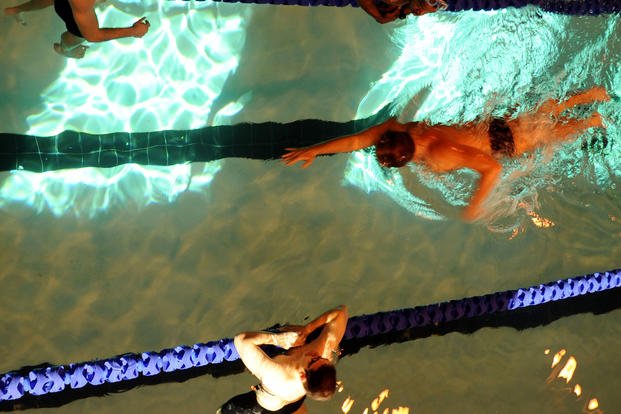I am looking to join a special-ops program, likely one that requires swimming. I know they require swims without goggles or fins, but there are also swims with both. I currently am using the fundamentals of the CSS technique, as I find this most effective for my current fitness level.
Do you have any tips for using the CSS technique without goggles? Should I just spend enough time in the pool so that my eyes adapt and attempt to swim, like in your videos?
Also, would it be better to swim-crawl, and if so, how should this be done, again considering I'll have no goggles?
Yes, I like the combat swimmer stroke for the 500-meter range swims. However, freestyle will be faster for you if you are allowed to use freestyle (Air Force pararescue jumpers/combat controllers). Otherwise, if you are considering SEALs, SWCC or EOD, you will want to master the CSS, which is just a nickname for a modified sidestroke.
Without Goggles and Swimming in Pools
I have always hated doing this, because it badly irritates my eyes. What I have learned to do is squint and always look down (especially when kicking off the walls). This will help the rush of water at higher speeds from hitting your eyes directly.
Every now and then, you need to look forward slightly by lifting your head about 45 degrees, but for most of the swim and the kickoffs, always look down and squint so you can barely see the line on the bottom of the pool. Being able to see that line will keep you swimming straight during swimming tests.
Swimming without fins requires you to get good at pulling with your arms and only using your legs when you do the scissor kick in the CSS or small, infrequent flutter kicks during freestyle (not constant, just when needed).
Swimming with fins is more about using the big muscles in your legs to propel you. You need to practice swimming with fins to get your feet, ankles, and hip and leg muscles used to the added stresses.
So practice both. Practice the CSS and freestyle without fins to ace the fitness to get to the training, and then focus on swimming with fins and a mask to get through the training. Build up to 1-2 miles of swimming with fins a few days a week. The other days should be spent in the water, practicing swimming without fins and pool skills like treading, floating, bottom bouncing, lifesaving and other challenges you will face in your training.
Good luck.
Stew
Stew Smith is a former Navy SEAL and fitness author certified as a Strength and Conditioning Specialist (CSCS) with the National Strength and Conditioning Association. Visit his Fitness eBook store if you're looking to start a workout program to create a healthy lifestyle. Send your fitness questions to stew@stewsmith.com.
Want to Learn More About Military Life?
Whether you're thinking of joining the military, looking for fitness and basic training tips, or keeping up with military life and benefits, Military.com has you covered. Subscribe to Military.com to have military news, updates and resources delivered directly to your inbox.


















